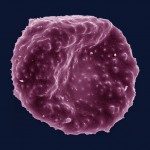Link to Pubmed [PMID] – 20430885
J. Biol. Chem. 2010 Jul;285(29):22484-94
Hsp70 chaperones can potentially interact with one of several J domain-containing Hsp40 co-chaperones to regulate distinct cellular processes. However, features within Hsp70s that determine Hsp40 specificity are undefined. To investigate this question, we introduced mutations into the ER-lumenal Hsp70, BiP/Kar2p, and found that an R217A substitution in the J domain-interacting surface of BiP compromised the physical and functional interaction with Sec63p, an Hsp40 required for ER translocation. In contrast, interaction with Jem1p, an Hsp40 required for ER-associated degradation, was unaffected. Moreover, yeast expressing R217A BiP exhibited defects in translocation but not in ER-associated degradation. Finally, the genetic interactions of the R217A BiP mutant were found to correlate with those of known translocation mutants. Together, our results indicate that residues within the Hsp70 J domain-interacting surface help confer Hsp40 specificity, in turn influencing distinct chaperone-mediated cellular activities.

